Loch flies
{{start}}
Loch Style fly-fishing involves fly-fishing from a boat, side onto the wind, using a system incorporating one or a number of flies. There are both wet and dry lock style fishing techniques. There are four distinct sub sections of loch flies: wake or bob flies, dropper flies that can be placed in various position s in a team of flies for different effects, attractor flies which are generally fished on a middle dropper and point flies.
The dry fly technique involves casting out in the direction of the drift, stopping the cast above the water so as to let the team of flies settle, waiting the desired time (often only 5 to 10 seconds) and then repeating the process in a slightly different position. Dry fly Loch style fly fishing covers a lot of water in a short time. The flies used are ordinary dry flies such as those shown in the dry fly page of this website. When selecting a team of flies try to balance the selection so that the most aerodynamic fly is on the point and the least aerodynamic fly is on the top dropper.
The wet technique involves casting out in the direction of the drift, fishing the flies using a range of techniques. Wet fly loch fly fishing, as well as incorporating a range of different retrieves and fly lines ranging from floating right through to very fast sinking lines can also involve fishing: the drop, the retrieve, the stop, the lift, the hang and the dibble and the dapple.
{{end}}
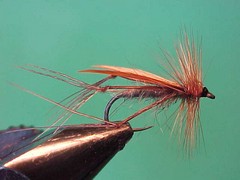
{{+1}}Crane fly{{-1}}
{{start}}
Crane flies are of the family Tipulidae and of the Order of Diptera or true flies and are the largest family of flies in Australia with some 800 species. An alternative name particularly in the United Kingdom is 'daddy long legs' but of course they should not be confused with the wispy spider often also referred to as a 'daddy long legs' in Australia.{{end}}
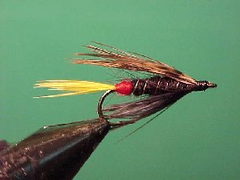
{{+1}}Connemara variant{{-1}}
{{start}}
It was the summer of 2000 that I first became involved on English style Loch Style fly fishing and slowly I accumulated an arsenal of techniques and flies. I really enjoy tying flies and so as I have seen various patterns I have tied them and tried them. Most have been discarded and just a few have won a place in my Loch Style fly box - this is one of them.{{end}}
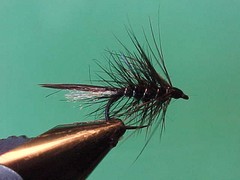
{{+1}}White arse black zulu{{-1}}
{{start}}
The Zulu tied with a black hackle body and a black tail has origins that go back to circa 1600 England. This fly deviates from the standard a little and has a white under-tail of antron tied in to represents a trailing shuck, seals fur dubbing and a soft hackle at the front so if it is used as a loch fly it has some movement and a couple of trigger points.{{end}}
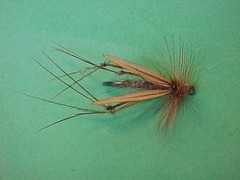
{{+1}}Daddy long legs – crane flies{{-1}}
{{start}}
Daddy long legs type flies are very popular in the United Kingdom and are becoming increasingly popular in Australia particularly in the middle summer weeks when the naturals find their way onto the water.{{end}}
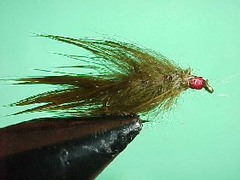
{{+1}}Fur fly{{-1}}
{{start}}
Conceptually these are a very simple fly but when tied with the right materials and in the right density they are a great all round fly. You can use them as a stream fly or for polaroiding or prospecting but in my opinion they are at their best when used as an attractor fly in a team of loch style flies. Choice of fur is important. If you can get died kangaroo that's OK but my preference is rabbit fur off a zonker strip.{{end}}
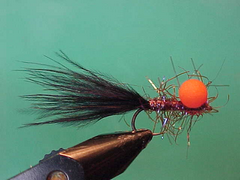
{{+1}}Straggle fritz booby{{-1}}
{{start}}
One of the best search flies in slow moving or still deeper water using a sinking line. If fishing from a fixed position cast it out, let the line sink to the desired depth, and then retrieve the line using a constant stripping motion, a pumping retrieve or a combination of both.{{end}}

{{+1}}Fuzzel Katie – Kate McLaren variant{{-1}}
{{start}}
I particularly find the yellow version useful when yellow winged hoppers or other insects with yellow parts are on the trouts menu. At other times pink is a great trigger color and when combined with the flash of the holographic tinsel and or the movement of the fuzzeled body and the soft front hackle are often enough to trigger a response.{{end}}

{{+1}}Kate McLaren variant – fuzzel Katie{{-1}}
{{start}}
Seldom, at least in my case, fished alone this fly is a great top dropper or bob fly when lock style fly fishing. I particularly find it useful when yellow winged hoppers or other insects with yellow parts are on the trouts menu. It looks nothing like a hopper of course but I think the little bit of yellow in the tail as well as the movement of the fuzzeled body and the soft front hackle are often enough to trigger a response.{{end}}
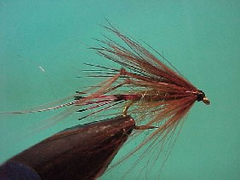
{{+1}}Green Peter – daddy variant{{-1}}
{{start}}
As many of you will be aware there is a Welsh fly called a "Green Peter". It was designed as a dry fly but is also a great Loch Style bob or middle dropper fly.{{end}}
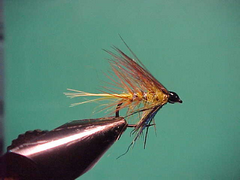
{{+1}}Invicta variant{{-1}}
{{start}}
The original Invicta was created by eminent English fly tier and tackle dealer James Ogden in the 1870's. With just a few tweaks this fly is as relevant today as it was 140 odd years ago. This is a great attractor fly at times when yellow winged hoppers and other insects with yellow body parts are around and yellow is a trigger color for trout.{{end}}













